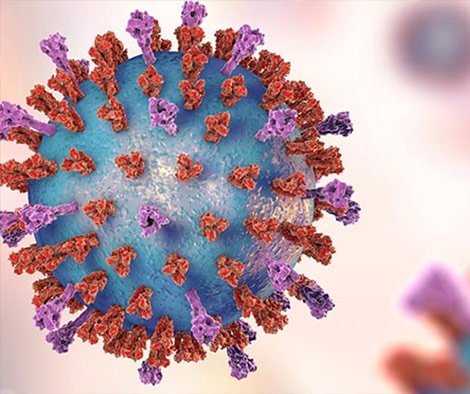NB-IRDT COVID-19 projections show good news for NB
Author: NB-IRDT
Posted on Apr 8, 2020

UNB’s New Brunswick Institute for Research, Data, and Training’s 10-day COVID-19 outcome model shows New Brunswick is currently tracking towards a best-case scenario outcome, according to data as of April 7.
NB-IRDT researchers, led by Dr. Ted McDonald, developed their prediction models by looking at outcome data as of March 31, 2020 from other countries with a range of COVID-19 response strategies, from strict lockdowns and widespread testing to slow implementation of restriction and low testing rates. Researchers also considered demographics, such as density and age structures.
“We looked at new infection numbers, hospitalization, ICU bed requirement, and mortality over time for a number of different countries that experienced outbreaks before New Brunswick. We paid particular attention to infection control responses and demographics,” explains Dr. McDonald.
“Some countries were very late in implementing any kinds of infection control measures. Other countries have challenging demographic profiles like New Brunswick, with high numbers of seniors and prevalence of chronic disease,” says Dr. McDonald. “Age and pre-existing conditions both appear to contribute to higher rates of hospitalization, ICU bed usage, and mortality.”
“We chose South Korea, Denmark, and Spain as our best, middle, and worst-case scenario models,” says Dr. McDonald.
South Korea has been widely praised for having successfully “flattened the curve” by implementing excellent infection control measures early on whereas Spain’s initial response to infection was not considered very effective. Denmark, while still early in the early days of their outbreak, represents a middle of the road scenario.
“We chose Denmark as our middle scenario because the country’s demographics are similar to New Brunswick. The median age in Denmark is 46 and the median age in New Brunswick is 42.3 and both have more than 20% of the population above age 60,” says Dr. McDonald.
Researchers developed two projections:
- What might happen in New Brunswick by April 10 if the province follows the trajectories of Spain, Denmark, and South Korea; and
- Possible outcomes by April 10 if New Brunswick experiences the same case-rate as those countries’ highest rates to date (based on March 31 rates).
In the best-case scenario – if New Brunswick follows a COVID-19 path similar to that of South Korea – the province would have 120 cases in 10 days and 147 at the “max.”
In the worst-case scenario – if New Brunswick had followed the same trajectory as Spain – the province would have 550 cases in 10 days and 1,570 at the “max.” Dr. McDonald says that thankfully, New Brunswick has stayed off that curve.
“Not everyone who tests positive for COVID-19 will require hospitalization. But based on the hospitalization rates for other countries, we can project how many of the province’s 150 ICU beds will be needed,” explains Dr. McDonald. “Right now, we are well within the capacity of our healthcare system.”
Dr. McDonald explains that based on the data released as of April 7, New Brunswick appears to be tracking more along the best-case scenario lines.
“That said, we are still in the early stages of our outbreak and maintaining a “best-case” trajectory depends on a number of factors,” says Dr. McDonald.
“The bottom line is that it was much too early to predict whether we’re managing to flatten the curve sufficiently so as to not overwhelm our healthcare system within the coming weeks,” says Dr. McDonald. “But the early indications are good and that rigorous stay-at-home directives—implemented relatively early in our outbreak—are working.”